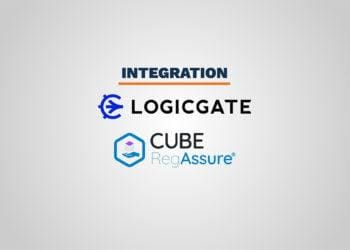Kryon’s CTO Shay Antebi makes the cause for robotic process automation. With the right tools, companies can not only minimize risk, but also introduce much-needed efficiencies, freeing compliance practitioners and other staff to tackle more specialized tasks.
As automation concepts become more common in businesses all over the world, the decision about which processes to automate is still a difficult one. Making the wrong choice could be costly, both from a time and money perspective.
It’s one thing to have a couple of robots learning a given internal process; investigating how you can scale automation throughout your company is a much more nuanced endeavor. Once you’ve decided to automate workflow processes within your company, what’s the best way to discover other possible candidates for process automation? And how do you guarantee compliance throughout each process, no matter what it is?
Addressing the Challenge with Process Discovery
With the utility of process discovery, businesses have avoided hiring expensive consulting teams and spending weeks or months investigating and documenting company workflows. It’s time-consuming, and many companies come out of this experience feeling like they lost — rather than gained — valuable resources at their disposal. Instead of a prolonged exchange with a “middle man”-style operator — which is how a lot of these sorts of audits happen — a business can instead deploy process discovery and instantly get information about what can be automated, without the legwork. In our estimation, process discovery is roughly five times faster than other methods, a timeframe that increases ROI and shrinks up-front investment. It’s the most cost-effective problem-solving in the automation field.
However, discovering a single business process that could be made more efficient is just one piece of the puzzle. The way I see it, the biggest challenge isn’t getting companies to understand the benefits of automation, or to build trust that the robots will learn the correct nuances of each manual business process. It’s about how to scale your learnings, and spread them throughout the organization. At this point in time, automation has become a reliable cost-saver across most industries. But how wide could (or should) this sort of practice extend? The challenge is to illuminate other opportunities within the company where a process could be automated, even if those processes look nothing like the others.
Real-World Examples
Let’s take, for example, the decision to close a personal bank account. Manually closing an account can take up to 27 days at the average bank. When a bank account is closed, a number of interrelated systems are initiated, virtually guaranteeing a prolonged voyage to the close of the transaction. The bank is interested in shortening that window for the sake of their customers. Automation is a low-lift solution here. By running process discovery, the bank could easily identify which pieces of the bank’s workflow have slowed the transaction. The output of the application is a map of processes, including steps ensuring an elimination of error, as well as ideas for how to design a new workflow. In our experience, businesses have been able to reduce a 27-day wait period down to two days.
Another example of successful automation I’ve encountered involved the GDPR’s “Right to be Forgotten” law in the EU. In years past, an individual invoking a “right to be forgotten” request triggered a corporate scramble to forget the user’s data. Most times, in response to a request, a company would have to manually go into every database where the personal information appeared and delete it by hand. This opened up the possibility of human error, should that operator forget or neglect to doublecheck each database that contains the sensitive information. The possibility of human error throughout the task is extremely high.
Now, with process discovery, not only will the user’s data be identified — and forgotten — in every place compliant with the request, that specific new learned process will be implemented moving forward. By learning the most effective process, the users’ data will be completely deleted and confirmed by process discovery’s new workflow. Then, the bot will learn the process and repeat it as much as needed, performing only the operations it’s instructed to perform.
The positive externality throughout both examples is the self-solving nature of compliance in process discovery. When a new workflow or process is built through process discovery, no single user can change it by themselves. The application builds in its own system of checks and balances; with each process roadmap comes its own airtight security system involving multiple operators. By restricting access to the automated process workflow, risk is virtually eliminated. And, because the process will always perform as instructed, there’s no possibility of overlooking a small detail. The new process is then cataloged and prepared for implementation, giving the user a wealth of information to use and better inform their business.
Process discovery creates a harmonious feedback loop. It’s a tool with a long tail of results — each process your company employs has the chance to be reworked and made more efficient. As soon as your business decides to automate a process, that process achieves a sort of theoretical confirmation of itself. While some cost is involved to get started, it’s quickly offset by long-term return on investment. Process discovery delivers a map to make your business more lean and efficient, as well as less stressful on the compliance front. By learning your business and repeating its tasks as quickly and cleanly as possible, process discovery allows you and your employees more time and bandwidth to tackle bigger, more specialized challenges.
Process discovery is in the business of building. With this product in your toolbox, a smarter business is only a few steps away.



 Shay Antebi is the Chief Technology Officer of
Shay Antebi is the Chief Technology Officer of 








